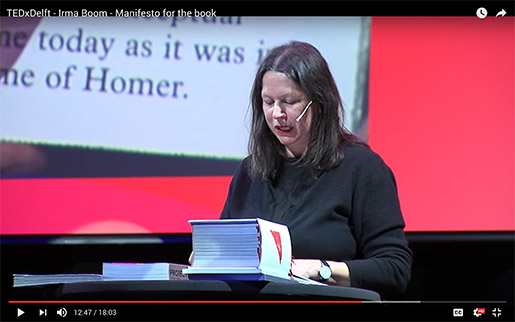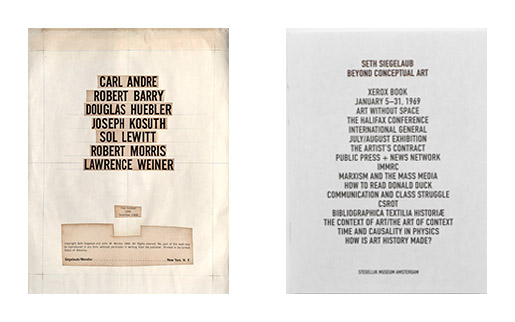What do you see when you look at a book for the first time? Is it the title? Is the typeface on a cover? Is it color? Alternatively, material? Why do we still print books if we have the internet, computers, e-books, tablets, and phones, some of which have a screen of a pocketbook? Well, in fact, because we still need a physical medium. It is notably hard to predict the development of technology. Fifteen years ago we could get a DVD exhibition catalog or indeed a movie. It would be a modern and bright solution, maybe quite fashionable.

People who are questioning the need for printed books assume it is easier to read from digital sources. Furthermore, It is simpler to carry, and the digital book does not require physical place. Nonetheless, why do we need a material text? ‘The book, if properly designed can last more than five hundred years’ – says Irma Boom. However, digital data can probably remain longer. Though it is the feeling that makes the book unique. It is the design transformed into a three-dimensional object.
Xerox Book (1) and Seth Siegelaub: Beyond Conceptual Art (2)
Compare books with photographs or paintings, she added. “An image is serving as a reference of time and place,” she said. “The flux inherent in the internet doesn’t allow you that kind of time. The printed book is final and thus unchangeable.” – Irma Boom for The New York Times (January 2017)
Mock-up draft of title page for Xerox Book published by Siegelaub
1968 [I.A.30] and the exhibition catalog by Irma Boom
What is interesting about this catalog of Seith’s Seigelaub? Originally, it was organized in a specific way: It is a catalogue-as-exhibition.
In 1968 Seigelaub arranged a presentation for Douglas Huebler, in which the catalog was the entire exhibition itself. However, later this year he continued experimenting with exhibitions as books. He came up with the project called Xerox book in which he invited artists, designed the book and ‘printed’ the exhibition. Unquestionably this project was the main inspiration of the catalog designed by Irma Boom. In her interviews, she often mentioned that she perceived the process of designing a book as an architecture project, which is similar to Seigelaub’s idea of the book–as–ehibition.
That Xerox book – the inspiration for this catalog is a notably revolutionary idea. It is a physical medium, with works designed in 1968 by a group of conceptual artists, which I can imagine, if designed in XXI Century, ‘ve been made in a digital form. It is so simple to be accustomed to the idea of digital information if you were born at the time when computers and e-books already existed. However, both books presently are the history that led to the path of creating a new type of exhibition space.
‘Beyond conceptual art’ was designed like a standard book, not allocated by bright design, but rather at the expense of quality registration of information and harmonious internal structure. Opening it for the first time, it reveals clear that this is not just a catalog consisting of texts, but the story, carefully structured, which attracts attention and calls for a careful study. It is fair to say that Irma Boom thoroughly develops the Seth Siegelaub concept of book-as-exhibition to book-as-a-museum.
Unlike some other catalogs, ‘Beyond conceptual art’ is easy to read. It is a biography, an exhibition, and a memorial of Seigelaub. On the back side, beyond the cover instead of the description is a photo of one of Seigelaub’s silk shirts. It is surprising to see something so personal rather than general information on a book. In my view, it certainly attracts the viewer and amazes you by the displacement of text with visual information.
‘My gallery is the whole world now’ – Seth Siegelaub
Seth Siegelaub, beyond conceptual art /Rietveld library catalogue no : 700.4 sie 1







